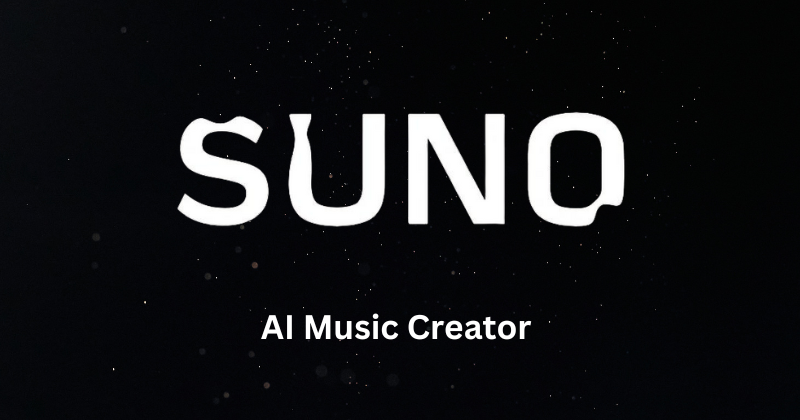Introduction: Suno AI – The Dawn of a New Musical Epoch
We are living through a seismic shift in the nature of creativity, and at the forefront of this revolution in the music world is Suno AI. Suno is not just another music production tool; it is a generative artificial intelligence platform that allows anyone, regardless of musical training, to create complete, high-fidelity songs from a simple text prompt. By typing a description of the style, subject, and mood you envision—for example, “an upbeat synth-pop song about a robot falling in love, with catchy electric guitar riffs”—Suno can generate original lyrics, melody, and full-band instrumentation, complete with a convincing AI-sung vocal track, in a matter of minutes.
How Good Is It, Really? Assessing Suno’s Capabilities
The quality of Suno’s output is not just impressive; it is, at times, startlingly good. Its progress has been rapid, and it currently sits at the cutting edge of consumer-facing music AI.
-
Accessibility and Speed: Suno’s greatest strength is its democratization of music creation. It removes the traditional barriers of needing to know an instrument, music theory, or expensive production software. A complete musical idea that would take a human artist hours or days to sketch can be realized by Suno in under two minutes.
-
Musical Coherence and Production Quality: The AI has been trained on a massive dataset of music, allowing it to understand and replicate genre conventions with remarkable accuracy. The songs it produces often have coherent song structures (verse, chorus, verse, bridge), musically sensible chord progressions, and surprisingly polished production. The instrumental tracks are rich and well-balanced.
-
The Vocal Frontier: This is Suno’s most talked-about and controversial feature. The AI-generated vocals are no longer robotic monotones. They carry emotion, inflection, and a convincing semblance of a human timbre. While a trained ear can sometimes detect the artificial quality, the line is blurring quickly. The ability to specify a vocal style (e.g., “female folk singer,” “gravelly male rock voice”) adds another layer of customization.
-
Current Limitations: It’s crucial to understand that Suno is not a sentient artist. Its “creativity” is a form of advanced pattern recognition. It can sometimes produce lyrics that are generic or nonsensical, melodies that are derivative, or harmonies that clash. It lacks true intentionality and the deep emotional context a human artist brings. It is a powerful collaborator and idea generator, but the human role in curating, refining, and adding soul remains essential for creating truly great art.
The Impending Sea Change: How Suno Will Transform the Music Industry
The emergence of technology as powerful as Suno will inevitably send ripples—and eventually tidal waves—through the entire music ecosystem.
1. An Explosion of Democratized Creativity:
The most positive change will be the sheer explosion of music creation. Millions of people with stories to tell and ideas to share, but no musical training, will now have a voice. We will see the rise of the “AI-auteur”—a director of AI systems who curates and guides the output to reflect their unique vision, much like a film director guides a crew.
2. The Disruption of Traditional Roles:
-
Composers & Songwriters: The role will shift from crafting every note to becoming a “creative director” or “AI curator.” The value will be in having a unique taste, a compelling vision, and the skill to guide the AI with effective prompts and refine its raw output.
-
Session Musicians & Producers: For certain types of production music (e.g., background music for videos, stock music, jingles), the demand for human musicians could decline. However, this may push human producers to focus on a “high-touch,” bespoke approach that AI cannot replicate.
-
Singers & Vocalists: This is the most contentious area. While AI vocals may threaten some commercial singing work, they could also become a new instrument. Imagine a producer creating an entire track with an AI vocalist before hiring a human to re-sing it with more soul, or using the AI voice as a unique artistic character in itself.
3. Hyper-Personalized Music:
The concept of music created just for you will become mainstream. A listener could generate a song for their wedding anniversary based on their personal story, or a workout playlist with songs tailored to their exact BPM and lyrical preference. Advertising and media will use AI to create instant, royalty-free soundtracks that perfectly match the mood of a scene or product.
4. A Legal and Ethical Quagmire:
The industry will be grappling with profound questions:
-
Copyright & Ownership: Who owns an AI-generated song? The user who wrote the prompt? The company that built the AI? What if the output sounds eerily similar to a copyrighted work in its training data? Current copyright law is ill-equipped for these questions.
-
Artist Compensation & Consent: Suno was trained on vast amounts of existing music, likely without the explicit permission of every artist involved. This raises huge ethical issues about consent and whether artists should be compensated when their work is used to train models that may eventually replace them.
Conclusion
Suno AI is far from a perfect replacement for human musicianship, but it is a profoundly powerful tool that marks a point of no return. It is not about AI replacing artists; it is about AI redefining what it means to be an artist. The music industry of the future will likely be a symbiotic ecosystem where human creativity and AI capability merge, leading to an unprecedented, chaotic, and potentially beautiful new world of sound. The challenge for the industry will be to navigate this transition ethically and ensure that the human spirit at the heart of music is not lost, but amplified.
Website: Visit Suno AI

